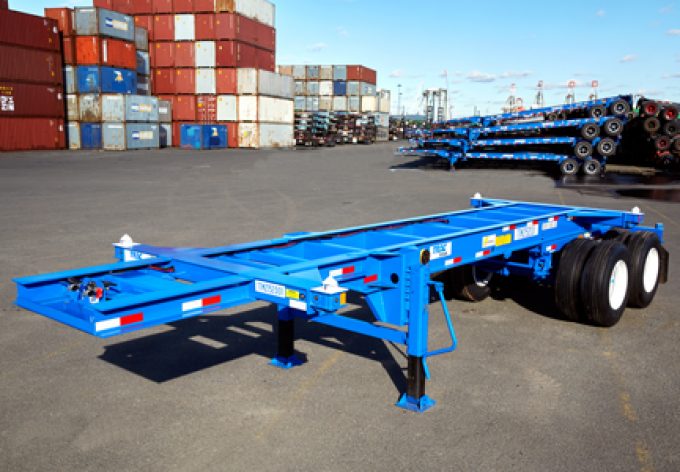Capture of MSC Aries will further drive up Indian export costs
With heightened geopolitical tensions sparked by the Iran-Israel faceoff, Indian exporters are again staring at ...

The CEO of TRAC intermodal, Daniel Walsh (pictured below), warned delegates at TPM 24 that industry collaboration would be key to avoiding a repeat of the chassis availability problems of the past two years.
Mr Walsh fielded some tough questions from the moment he stepped onto the platform.
“We had to pay thousands of dollars in rail storage because no TRAC chassis were available,” complained one audience member, likely referring to the pandemic-induced surge of port volumes that left many beneficial cargo owners (BCOs) incurring steep demurrage costs.
But Mr Walsh was loath to accept or apportion blame, arguing that no one party was responsible for that supply chain issue – “there weren’t enough boxes being moved off the terminals back to Asia”, he said, causing “landslide congestion” in the US.
He argued that any “industry-wide challenge” called for “an industry-wide solution” — in which data exchange would play a key role.
Mr Walsh claimed the common practice of being secretive about proprietary data was “myopic”, as sharing between customers and vendors was harmless and would, in fact, improve efficiency.
He pointed to the US Department of Transportation’s Freight Logistics Optimisation Works (FLOW) system, an industry-supported initiative that aims to achieve greater transparency. In addition to purchase order information from importers, the programme collects logistics supply, demand and throughput data from participants, including BCOs, ocean carriers, railroads and intermodal equipment providers like TRAC. The Bureau of Transportation Statistics then anonymises, regionally segments and aggregates the data before sharing it with participants.
The DoT claims this would provide participants with a “broad, daily view of the current conditions of the overall logistics network, beyond what they may observe within their own operations”.
Mr Walsh said: “We’re really proud to support it,” and added that the system enabled TRAC to “glean additional information and make better decisions”.
And, he said, there was more helpful data to be unlocked, such as the difference between the chassis’ delivery date and the consumption date. That knowledge would allow TRAC to deliver the chassis closer to the consumption date, thus avoiding unnecessary tie-ups of its products.
“This sort of industry collaboration is really critical,” he added.
Meanwhile, TRAC is making its own preparations for the next uptick in volumes.
The first, and “most critical”, aspect Mr Walsh identified was investment: ensuring “there’s enough high-quality units on the road to support the needs of the supply chain”. He added that Trac’s rate of spending had almost doubled in recent years, taking the total spent on fleet improvements to just under half a billion dollars since June 2020.
Much of that financial firepower comes from TRAC’s owner, US investment giant Stonepeak.
The second is aspect is operational: responding to regional surges in demand. To that end, he said, TRAC had partnered with Union Pacific to set up six strategic chassis reserves to move units to inland locations during periods of congestion.
Listen to this clip from The Loadstar Podcast about how supply chain disruptions are shaping Transpacific contract negotiations:
A final tranche of investment was reserved for technology, noted Mr Walsh, including its custom-built platform Helix; its first deployment of AI through an app called Roadster and the rolling out of GPS across its fleet. For customers, this ought to mean faster response times and a smoother interface.
Finally Mr Walsh faced the most anticipated question: what does the largest US marine chassis provider and pool manager think about the decision of the FMC to allow US truckers to choose their own chassis provider?
“No comment,” he replied.
But he did maintain TRAC’s commitment to both its preferred pooling model and private leasing – the latter may become more common in the wake of the ruling.
“We’re in a business of saying ‘yes’ to our customers,” he said.
Comment on this article